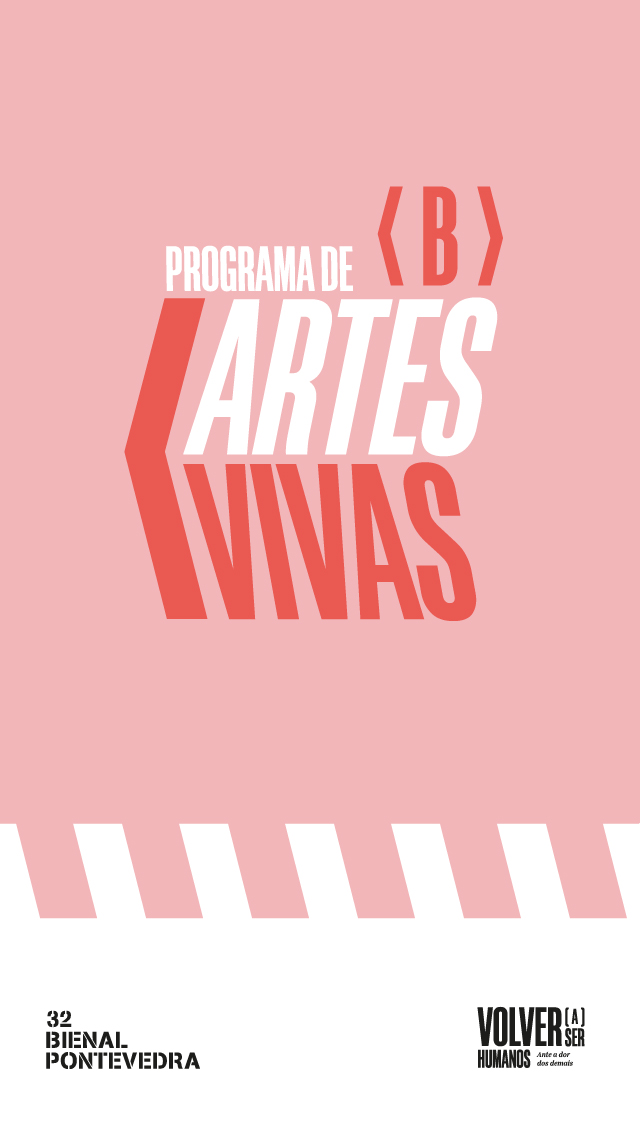The live art programme - Bienal de Pontevedra
LIVE ART PROGRAMME

At the 32nd edition of the Pontevedra Biennial, the live art programme is conceived as a body in movement that travels through different spaces in the town and the province of Pontevedra, inhabiting them from the ephemeral, the sensitive and the collective. Curated by Iñaki Martínez Antelo, this programme displays an expanded dramaturgy in which action, presence and the relationship with the environment are at the very heart of the artistic experience.
Live art, far from being a closed category or an established discipline, is a hybrid, transdisciplinary and permeable field of creation, where performance, dance, poetry, experimental music and participatory action merge. The live experience does not only refer to the body of the artist on stage, but also to the relational dimension, to the shared event, to the here and now that is created between the work, the space and the audience.
At a biennial entitled 'Being human again', at a time marked by wars, forced displacements, humanitarian crises and violence that are breaking the social and emotional fabric, live art becomes a space to help us think about what it means to 'be human' today. 'Being human again' is not a nostalgic motto, but a critical practice. Actions, dance performances and concerts that suggest returning to the body as a political, sensitive and affective territory.
Live art, thanks to its capacity to pose questions through presence, activates other forms of attention, other ways of coexisting. This series brings together artists who work using the body as an archive, as a wound, as a threshold, as a refuge. At a time when hate speeches are gaining ground, we assert the value of the fragile, of the incomplete, of the living things, because we believe that contact with live art is more necessary than ever.
With this programme we want to turn the different exhibition spaces of the Biennial and other locations into places of shared experiences; to explore the body as a living archive, as a frontier, as resistance; to accompany contemporary thought from practices that give priority to the performative, the poetic and the relational; and, above all, to open spaces of encounter denying conventional exhibition formats and promoting a radical listening between artists, contexts and spectators.
The programme opens on Friday 27 June in the town of Pontevedra with a participatory performance by the Portuguese artist Vasco Araújo, a choral and collective action that activates the urban space through songs as a form of protest, and closes on Friday 26 September with La Ribot in the plenary hall of the Provincial Council of Pontevedra (Deputación de Pontevedra); a clear declaration of intent. Between these two dates, every Friday during the Biennial (except on 25 July and on 15 August), different performances will be taken to the town and to other places, such as the warehouses of Aceros del Tea in the town of Ponteareas, the Salgadeiras de Moreiras Museum in the town of O Grove, A Lanzada Chapel in the town of Sanxenxo and the Sea Museum of Galicia in the city of Vigo.
This live art programme does not seek to give answers or consolidate discourses; rather, it raises questions, tensions and possibilities. In a world that tends towards closure, control and uniformity, the live art present in this Biennial is conceived as an open gesture, as a celebration of fragility, difference and imagination.
